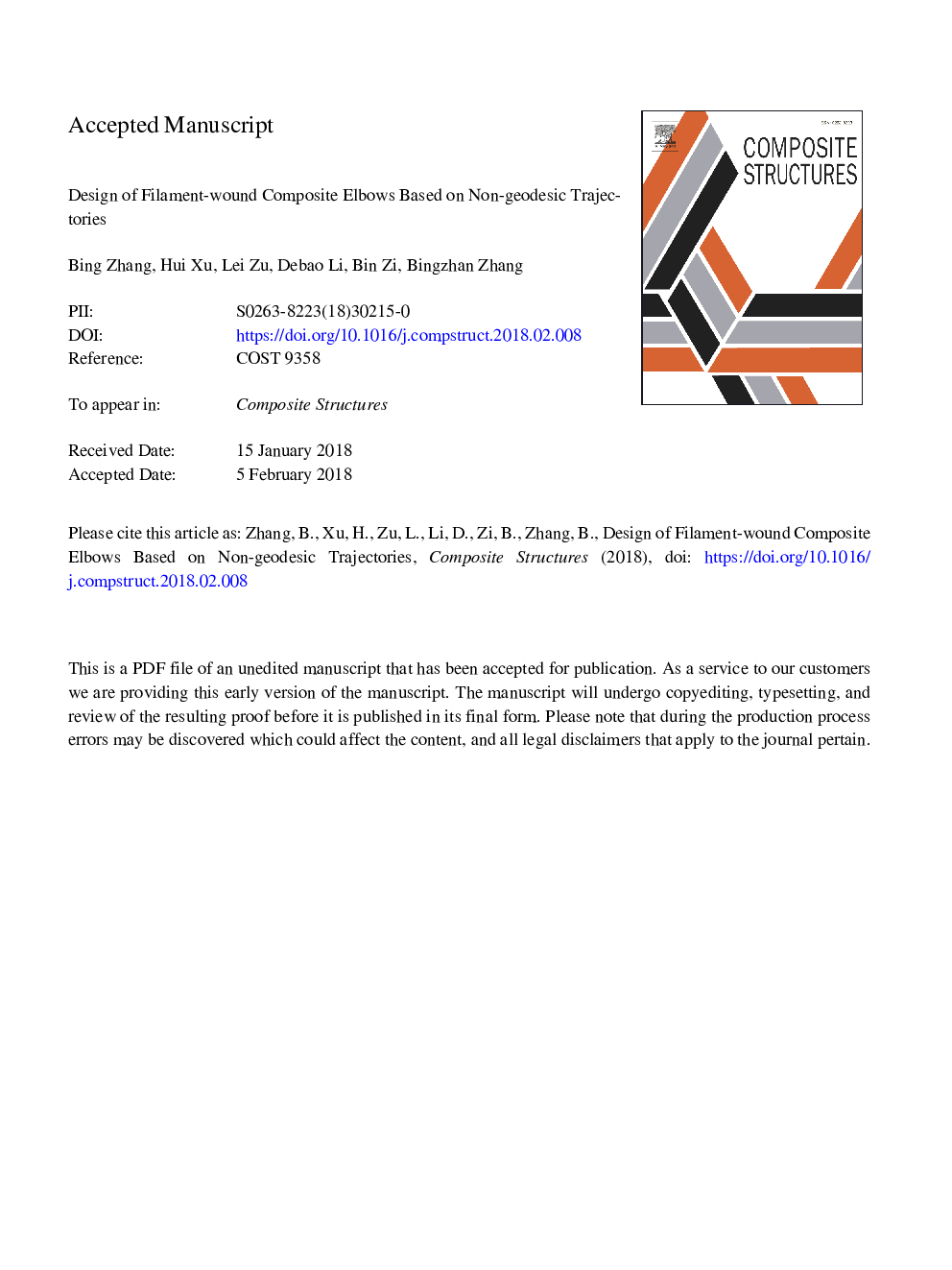| Article ID | Journal | Published Year | Pages | File Type |
|---|---|---|---|---|
| 6704119 | Composite Structures | 2018 | 19 Pages |
Abstract
In this paper two winding methods were applied to produce filament-wound composite elbows, which are the whole application of non-geodesics, and the application of geodesics for the torus section and non-geodesics for cylindrical end sections. The resulting winding patterns were numerically simulated for various numbers of partitions. Tsai-Wu failure indices of the composite elbows obtained using various initial winding angles were calculated and the burst pressure of the elbow was predicted using finite element method. The results reveal that the whole application of non-geodesics leads to better structural performance of the composite elbows than the partial application of non-geodesics for cylindrical end sections. The present non-geodesics-based method provides a useful reference tool for design and production of filament-wound composite elbows.
Related Topics
Physical Sciences and Engineering
Engineering
Civil and Structural Engineering
Authors
Bing Zhang, Hui Xu, Lei Zu, Debao Li, Bin Zi, Bingzhan Zhang,
